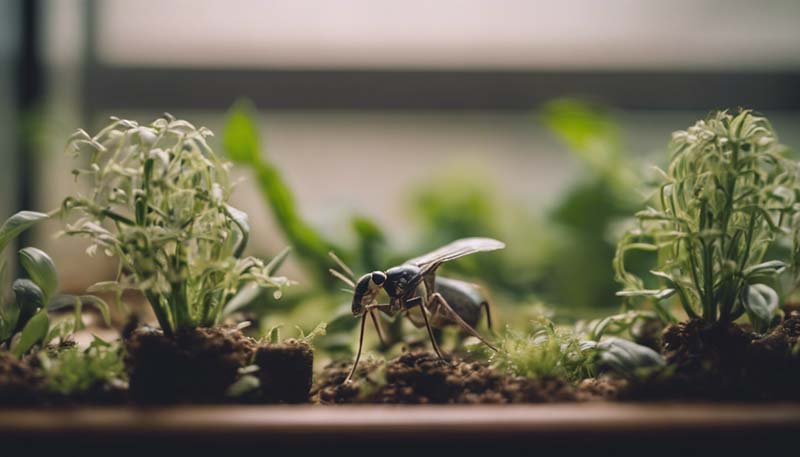Sustainable indoor gardening is about creating a balanced ecosystem that thrives on natural processes. A key aspect of sustainability is using natural pest control methods to manage common indoor plant pests without resorting to harsh chemicals. This article will explore various natural pest control strategies, from companion planting to biological controls, that you can implement to maintain a healthy and vibrant indoor garden.
## Understanding Indoor Pests
Before delving into natural pest control, it\'s essential to understand common indoor pests that can affect your plants:
- Aphids
- Spider mites
- Whiteflies
- Mealybugs
- Fungus gnats
- Scale insects
These pests can cause significant damage to your plants, ranging from cosmetic issues like discolored leaves to more severe problems like stunted growth and plant death.
Advertisement
## Natural Pest Control Methods
1. Companion Planting
Planting certain species together can deter pests naturally. For example, marigolds are known to repel nematodes and other pests, while basil can deter aphids, whiteflies, and fungus gnats.
2. Use of Natural Predators
Introducing beneficial insects to your indoor garden can help control pests. Ladybugs, lacewings, and predatory mites are natural enemies of aphids and mites. You can purchase these insects from garden centers or online suppliers.
3. Insecticidal Soaps and Sprays
Insecticidal soaps and neem oil are effective against a variety of soft-bodied insects. They work by dissolving the outer layer of the insect, causing it to dehydrate. Always follow the manufacturer\'s instructions for application.
4. Diatomaceous Earth
Diatomaceous earth is a natural powder made from the fossilized remains of diatoms, a type of algae. It\'s abrasive to insects, causing them to dehydrate and die. Sprinkle it around the base of your plants for protection.
5. Homemade Sprays
Vinegar, soap, and water can be mixed to create a simple spray that can help control pests. For a more potent solution, add a drop or two of dish soap and a teaspoon of baking soda. Test on a small area first to ensure it doesn\'t harm your plants.
6. Essential Oils
Certain essential oils, like peppermint, eucalyptus, and rosemary, can repel pests. Mix a few drops with water and spray on your plants. Be cautious as some essential oils can be toxic to pets or beneficial insects.
7. Physical Removal
For larger pests or visible infestations, simply removing them by hand can be effective. Use a pair of tweezers or a soft cloth to gently wipe pests off the leaves.
8. Proper Garden Hygiene
Regularly inspect your plants for signs of pests and remove any dead leaves or debris, which can harbor pests and diseases.

9. Heat and Cold Treatment
Some pests are sensitive to temperature. A day of cold (refrigerator) or heat (gentle heat source) treatment can kill off pests without harming most indoor plants.
10. Biological Control Products
There are commercially available biological control products containing fungi or bacteria that are lethal to specific pests. These are often used for more severe infestations.
## Creating a Pest-Resistant Environment
Prevention is the best form of pest control. Here are some strategies to make your indoor garden less inviting to pests:
- **Proper Watering**: Overwatering can lead to fungal issues and attract pests. Water plants only when the top inch of soil is dry.
- **Good Air Circulation**: Stagnant air can promote the growth of mold and mildew, which can attract pests.
- **Balanced Fertilization**: Over-fertilizing can create an environment where pests thrive. Use a balanced, controlled-release fertilizer.
- **Regular Pruning**: Pruning dead leaves and flowers can prevent the buildup of pests and diseases.
## Conclusion
Sustainable indoor gardening is about fostering a healthy environment for your plants to grow without relying on harmful chemicals. By using natural pest control methods, you can protect your indoor plants from pests while maintaining a safe and eco-friendly space. Remember, the key to successful pest management is early detection and intervention. Regularly inspect your plants, and act promptly when you notice signs of pests to keep your indoor garden lush and pest-free.
Comment